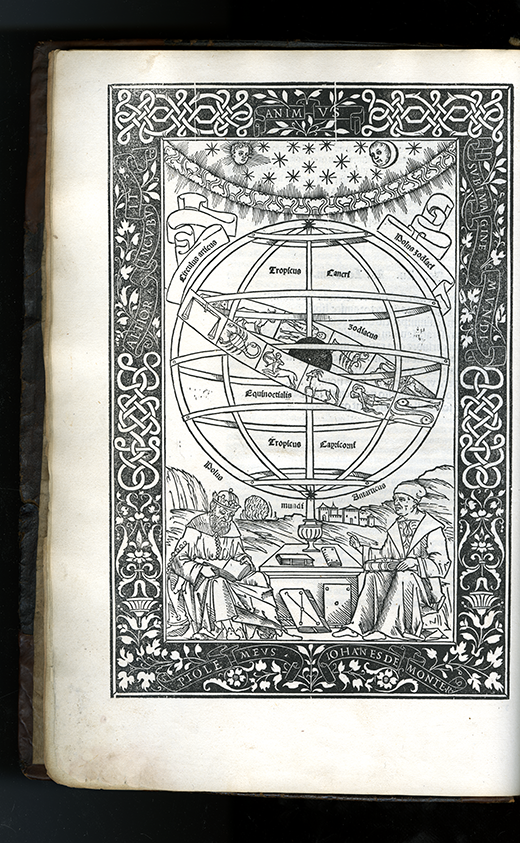Teaching and Learning the Trigonometric Functions through Their Origins: Episode 3 – Ptolemy Finds High Noon in Chords of Circles
Chances are good that you have ready access to a cellphone, and that one of its main uses for you is as a timepiece. The time it tells is broadcast to you, and to everyone else served by your and other service providers, by a global GPS satellite system, which offers a highly accurate, synchronized regulation of time, down to the microsecond. This system of synchronized time telling is a feature (or curse?) of 21st-century life in much of the world that we generally take for granted. But clearly, it was not always that way. The classroom unit presented here, Ptolemy Finds High Noon in Chords of Circles, examines an early use of trigonometry, a branch of mathematics that forms a standard part of the mathematical training of students today, by drawing on primary historical sources related to the problem of constructing an effective sundial in the ancient world.

A simple gnomon sundial. Photo by Rich Luhr, reproduced under
Creative Commons license CC BY-NC-ND 2.0.
In the ancient world, the telling of time was an entirely local affair, of relevance only to small groups of people and restricted to small regions of the planet, not needing nearly the level of accuracy and synchrony that we come to expect in today’s world. In most circumstances, a general estimation of how high the Sun was in the sky, or which constellations were currently visible, was enough to guide people through their affairs. For the ancient Greeks, the paths of the Sun and stars, traced out against the great dome of the heavens, were reliably periodic and provided them with everything they needed for the kind of timekeeping that was useful to them.
|
In Ptolemy Finds High Noon in Chords of Circles, students read a brief excerpt from Claudius Ptolemy's important work on mathematical astronomy, the Almagest (second century CE). In this passage, Ptolemy made use of a table of chords that provides the measures of the lengths of chords across arcs in a reference circle for values of arclength from 0° to 180°, in steps of ½°. Ptolemy used these chord lengths in concert with a geometric model of the Sun in the sky and the shadow-casting gnomon at the ground to determine the precise lengths of shadows cast by the Sun at noon on the four first days of the seasons of the year at the latitude of the island of Rhodes. Through a series of tasks in the classroom unit, students prove and apply a proposition from Euclid’s Elements that was used by Ptolemy to connect the position of the sun on the ecliptic circle with the shadow of the gnomon on the earth. They then use basic sexagesimal arithmetic to verify Ptolemy’s results on the lengths of the gnomon’s shadow. This unit is one of a series of six classroom units in the Convergence series Teaching and Learning the Trigonometric Functions through Their Origins that attempts to provide students with a rich motivation for the study of trigonometry by presenting a series of episodes from the long history of the subject. These episodes work to contextualize the main ideas of trigonometry in the questions that earlier mathematicians addressed in developing the subject over thousands of years. The unit Ptolemy Finds High Noon in Chords of Circles (pdf) is ready for student use. It is meant to be completed in two 50-minute classroom periods, plus time in advance for students to do some initial reading and time afterwards for them to write up their solutions to the tasks. A brief set of instructor notes offering additional background and practical advice for the use of these materials in the classroom is appended at the end of the student version of these projects. |
 Diagram of armillary sphere in Peuerbach’s and Regiomontanus’s Latin translation of the Almagest. Mathematical Treasures, Convergence. |
As mentioned above, this is the third unit in the Convergence series Teaching and Learning the Trigonometric Functions through Their Origins. Although these classroom projects are posted here as parts of a series, each episode has been redesigned to stand alone. Readers who want to see the entire Primary Source Project (PSP) from which these units are drawn can obtain that PSP, A Genetic Context for Understanding the Trigonometric Functions, without waiting for future installments to appear, from the website of the NSF-funded project TRansforming Instruction in Undergraduate Mathematics via Primary Historical Sources (TRIUMPHS). The LaTeX source code of all TRIUMPHS projects, including the units to appear in this series, are available from the project authors by request.